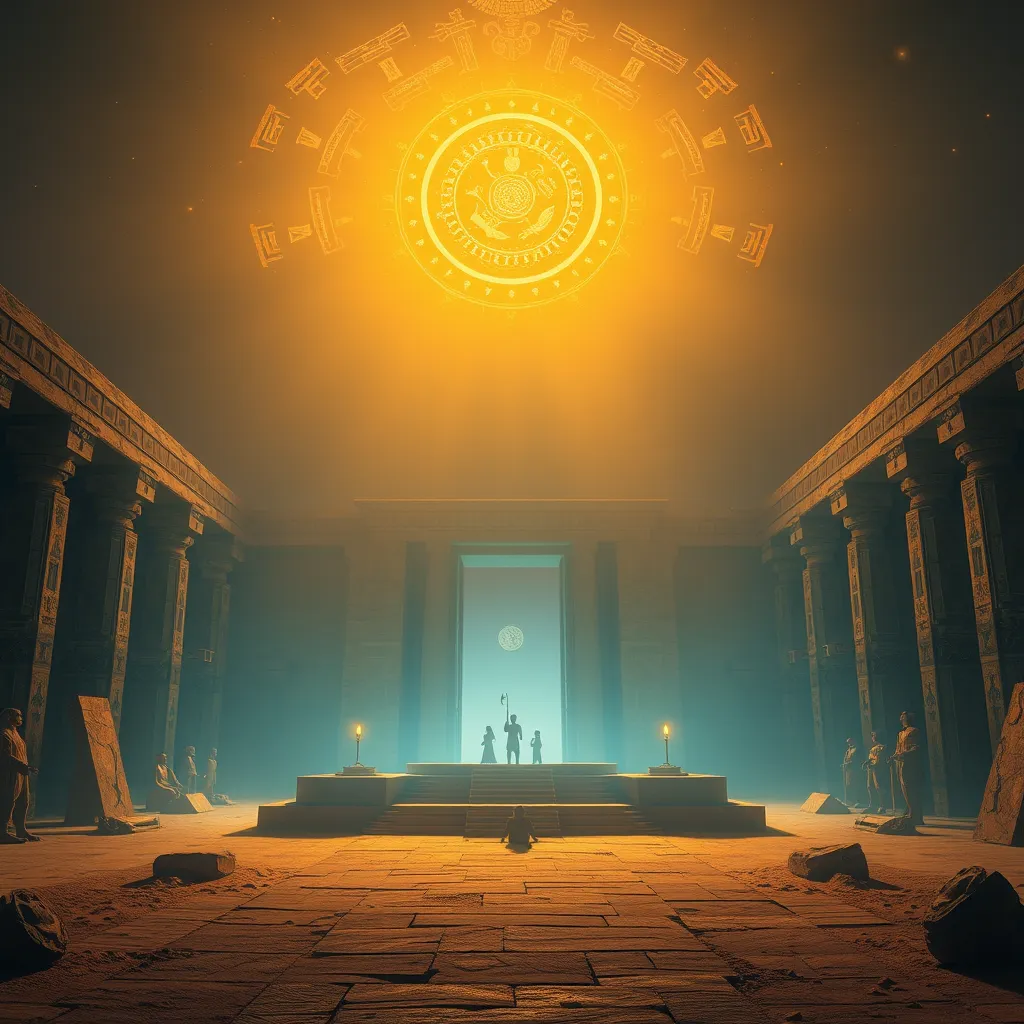The Duat: A Realm of Eternal Light and Shadows
I. Introduction to the Duat
The Duat, also known as the Egyptian underworld, holds a significant place in Ancient Egyptian mythology. It is a complex and multifaceted realm that plays a critical role in the beliefs surrounding death and the afterlife. Understanding the Duat is essential for comprehending how the ancient Egyptians viewed life, death, and what lies beyond.
In essence, the Duat serves as the afterlife destination for souls after death. It is not merely a place of darkness and despair; rather, it embodies a mystical journey filled with challenges, enlightenment, and the potential for eternal life.
II. The Structure of the Duat
The Duat is composed of various regions and realms that depict different stages of the afterlife journey. Each area serves a specific purpose, reflecting the duality of light and darkness that characterizes this enigmatic space. Some notable regions within the Duat include:
- The Waters of Chaos: The initial boundary that souls must cross, representing the unknown.
- The Hall of Judgment: The site where souls undergo the weighing of their hearts against the feather of Ma’at.
- The Field of Reeds: The idyllic paradise for the righteous, symbolizing eternal life and abundance.
- The Land of Darkness: A place of torment for the wicked, embodying eternal punishment.
Symbolism plays a crucial role in the Duat, particularly the interplay between light and darkness. Light is often associated with truth, purity, and the divine, while darkness represents fear, ignorance, and the unknown.
III. Deities and Spirits of the Duat
The Duat is populated by a pantheon of deities and spirits that guide and protect souls on their journey. Some of the key figures associated with the Duat include:
- Osiris: The god of the afterlife, resurrection, and the ruler of the Duat.
- Anubis: The jackal-headed god who oversees mummification and the protection of graves.
- Ma’at: The goddess of truth and justice, whose feather is central to the weighing of the heart ceremony.
- Thoth: The god of wisdom and writing, who records the outcomes of the judgment.
Each deity plays a vital role in assisting souls through the Duat, ensuring that they navigate its challenges and reach their final destination, whether it be reward or punishment.
IV. The Journey of the Soul Through the Duat
Upon death, the soul embarks on a journey through the Duat, a process fraught with trials and challenges. This journey is often depicted in ancient texts and art, symbolizing the soul’s struggle for redemption and eternal life.
Key aspects of the journey include:
- Crossing the Waters of Chaos: The soul must navigate a tumultuous and dark expanse, often personified as a serpent or monster.
- Facing Guardians: Various guardians and creatures may challenge the soul, testing its worthiness to proceed.
- Seeking Guidance: The soul may call upon deities for assistance, particularly Anubis and Osiris.
This journey is not only a physical passage but also a spiritual one, as the soul confronts its past actions and intentions.
V. The Role of Judgment in the Duat
One of the most critical aspects of the Duat is the weighing of the heart ceremony, where the deceased’s heart is weighed against the feather of Ma’at. This ritual is a pivotal moment in a soul’s journey, determining its fate in the afterlife.
The process unfolds as follows:
- The heart, representing the individual’s deeds and morality, is placed on one side of the scale.
- The feather, symbolizing truth and justice, is placed on the other.
- If the heart is lighter or equal to the feather, the soul is deemed worthy and is granted passage to the Field of Reeds.
- If the heart is heavier, it is devoured by Ammit, the devourer, resulting in eternal damnation.
This ceremony underscores the profound moral framework of Ancient Egyptian beliefs, emphasizing the importance of living a just and virtuous life.
VI. Symbolism and Themes in the Duat
The Duat is rich in symbolism, particularly through its associations with light and shadows. Light is often viewed as a representation of truth, purity, and divine presence, while shadows evoke themes of fear, ignorance, and the unknown.
Some key symbolic interpretations include:
- Light: Represents the divine guidance offered by gods and the potential for rebirth.
- Shadows: Serve as reminders of the trials and tribulations that souls must face, highlighting the challenges of the afterlife.
This duality reflects the broader human experience, illustrating the continuous struggle between knowledge and ignorance, life and death.
VII. The Duat in Art and Literature
Art and literature from Ancient Egypt provide rich depictions of the Duat, illustrating its significance in their culture. The Duat is often portrayed in tomb paintings, papyrus scrolls, and other artifacts, showcasing the beliefs surrounding the afterlife.
Notable representations include:
- Tomb Paintings: Artistic renditions that depict the journey through the Duat and the judgment process.
- Pyramid Texts: Inscribed spells and hymns that guide the deceased through the afterlife.
- Book of the Dead: A collection of spells designed to assist the dead in navigating the challenges of the Duat.
These artistic and literary works not only reveal the beliefs about the afterlife but also reflect the values and aspirations of Ancient Egyptian society.
VIII. Conclusion
The Duat continues to captivate modern audiences, serving as a symbol of the complex interplay between life and death. Its legacy endures in modern interpretations of the afterlife, spirituality, and the human experience.
In reflecting on the Duat, we are reminded of the balance of light and shadows that exists within all of us. The journey through the Duat serves not only as a mythological framework but also as a profound metaphor for our own struggles, aspirations, and the quest for enlightenment in the face of darkness.




